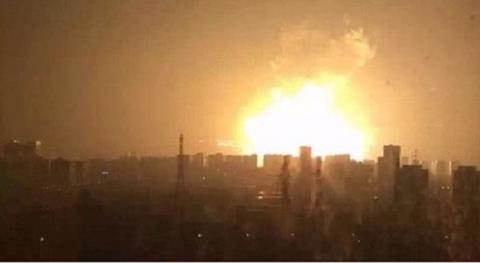Global incidents like the Tianjin explosion in China can leave loss adjusters in a cultural and political bind. Cunningham Lindsey director of major and complex loss Ben Price unpicks the challenges behind managing major losses

Adjusting a major loss demands technical excellence, but this alone is not enough. In today’s interconnected world, an incident that occurs in one territory can reverberate across many more, and add complexity to what might be an already difficult situation. If you then add the challenges of dealing with a variety of local legal systems, cultural variations and political differences, handling a major loss can require a very wide skill set indeed.
Access denied
When the news of the Tianjin explosions first broke, it was clear that as a major port there would be significant losses for international firms using the port to transport goods in and out of China. The first explosion was equivalent to detonating three tonnes of TNT, this was followed by a second equivalent to 21 tonnes of TNT. Over the next eight days fires and a series of further explosions occurred. The result was damage across an area up to 10km away from the blast epicentre.
In the immediate aftermath of the explosions the Chinese authorities restricted access to the site for a number of days, due to fears of follow-up explosions and chemical contagion. This denial of access meant that there was an information vacuum for international clients with potential claims. Insurers and their clients were anxious to know the extent of the damage, and begin loss assessments.
The size of the site and the length of the lock-out meant that creative thinking was required to start gathering information that could help establish the size of the loss. So, to help fill the vacuum, we hired drones to fly over the restricted area to provide a bird’s eye view of the blast zone. The footage enabled us to plot the extent of the damage on maps, and helped us provide initial loss assessments. We were also able to scope out the scale of assistance required, so we could mobilise resources from across Asia into China, enabling remedial and loss estimate work to begin as soon as site access was permitted.
Getting under the skin of a claim
The catastrophic nature of the damage from the explosion was shocking itself, but the damage was even wider than it first appeared. For example, our forensic specialists identified that contamination from sodium cyanide stored at the port had entered the sewage system, along with other toxic materials still in the atmosphere. So, for the vehicles that - to the naked eye - appeared undamaged, it became apparent that long-term exposure to these chemicals could cause damage to the paintwork, creating further losses. For these less obvious consequences, forensic analysis techniques are increasingly being employed to unpick clues and get under the skin of a claim. Forensic insight and analysis can prove the key that gets to the heart of the issue.
Cross border complexities
Major loss claims rarely respect frontiers, and this is never more evident than in cross-border environmental claims. Different jurisdictions mean that there will be a wide variety of international regulations to contend with, and numerous interested parties – potentially including the courts. The fact that insurance policies will respond differently from country to country only adds to the problem. For example, if a toxic spill spreads across borders there is the cost of clean-up in every country, but a policy trigger is often based on remedial action required by national regulators and this is not necessarily mandatory in every country. The key here is prevention not response: pre-loss communication and planning between brokers and underwriters to help establish a consistent and practical approach in the event of a claim.
The increasingly international supply chain operated by many companies mean that many industrial losses are cross jurisdictional – and therefore complicated by different cultural perspectives and legal issues. In one such claim a French waste management company found that sulphur was getting into its industrial machinery causing material damage and forcing it to halt production, it pointed the finger at the Dutch supplier of its biological desulphurisation unit. However, determining which company was liable was complicated by the international nature of the dispute and different legal requirements in France and the Netherlands. So while having the engineering knowledge to understand the problem was important, having the legal understanding of the regional judicial system in a particular country was also crucial.
Getting results
With businesses looking to expand into new emerging markets, where regulatory requirements are often opaque and local cultural differences can create misunderstandings, dealing with international claims is often a complex task. The commercial angle to any major loss is usually a significant and delicate issue, with a policyholder and their insurer often having a different understanding of the policy wording or desired outcome. Arriving at the right solution requires a potent combination of a high level of technical skill and industry specific knowledge, client co-operation and pre-loss planning.







No comments yet